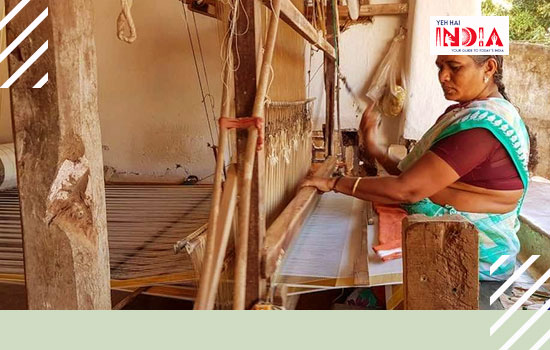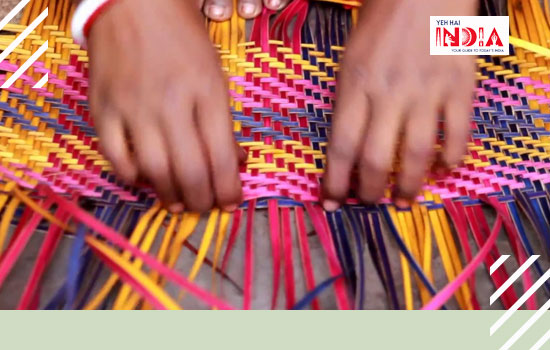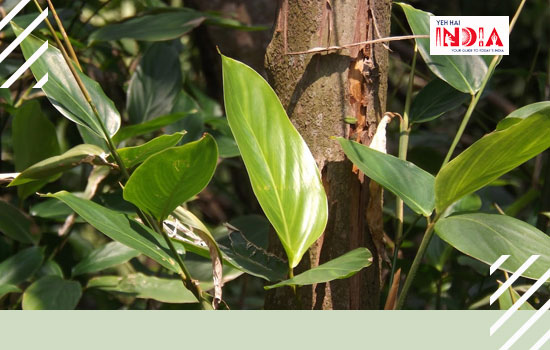Goalpara district of Assam is home to the exquisite art of hand-crafted Sital Pati, also known as cool mats.
This classic handicraft is an art of prominence and famed for being a part of ‘UNESCO’s representative list of the Intangible Cultural Heritage of Humanity’.
Along with the creativity of skilled artisans, mutual development of modern skills and new innovations elevates the attractiveness of Goalpara’s Sital Pati Mats.
Artisan Cluster of Goalpara

The Sital Pati mat is one-of-a-kind beauties that adds to the richness of the artsy state that Assam is.
Goalpara district of the state is well-known for the age-old craft of Sital Pati that has been passed down through generations of skilled rural artisans.
Pharsingpara and Dubapara villages are the two major hubs of Sital Pati craft that falls under the Goalpara district.
The Nadi and Dey communities of these villages are known as the main practitioners of the ancient mat-craftwork.
Almost all the residents of Dubapara and Pharsingpara are involved in making the magnificent Sital Pati mats.
Artisans end up earning a handsome amount due to the constant demand for cool mats for aesthetic purposes.
Even the people residing in metropolitan cities are looking for such traditional mats.
Owing to this demand, Sital Pati mats are also made available on famous online platforms.
Apart from the mats, Goalpara’s artisans are also skilled in crafting items like school bags, partitions, tablemats, etc.
Recommended Story – Phad Paintings of Shahpura
Diverse Usage of Sital Pati Mats

The existence of mat-weaving traces its origin back to ancient times when sages began using these mats while meditating.
The traditional use of such mats can also be noticed in most of the pictures depicting ancient times.
One aspect of Sital Pati mats specifies the traditional use.
The other aspect directs us to the general utilitarian rural craft that is now evolving into conventional uses.
Pati or mats were of great importance to the eastern households before the technological advancement of modern appliances.
The cooling function of these multipurpose mats during summers is one of the best and the most benefitting ones.
When looking for something to beautify your space with a traditional vibe, these mats can be a good choice.
Sital Pati can also be your go-to option when looking for an alternative to traditional bedding in summer times.
Features of Goalpara’s ❛Cool❜ Mats

The efficiency of Sital Pati doesn’t end here; as apart from being a multi-use mat, it is a treat to the eyes.
The natural textures, excellent motifs, and vibrant colors of Sital Pati mats reflect the creativity of Indian art.
Quality of these mats is recognized through their smoothness, glossiness, and texture. The more the smoothness or the finer the texture, the better the quality.
As the craftsmen say, the best kinds of Sital Pati mats are the ones that are so smooth that even a snake can’t glide over them.
Another amazing feature of these mats is that the colors used in the process of creation are not made of any chemical compositions.
The excellent beauty of Sital Pati is achieved by using the organic extracts from the seeds of tamarind leaves, hibiscus flowers, and other natural things.
Recommended Story – Carpet Weaving in Bhadohi
The Rooted-in-Nature Raw Materials

The making of the Sital Pati craft is primarily based on the Murta plant locally known as bet or Patidoi in Assamese.
Murta plant is basically a non-stemmed, knotless, and thin reed that grows on waterlogged and marshy areas.
Sital Pati mats are woven using the same thin reeds after undergoing an intricate process.
The fine skill of creating art from reeds has been going great guns and has also become an aesthetic something for the home décor industry.
Making of Sital Pati

Pati making process involves a series of steps including plantation, weeding, stem-cutting and peeling, boiling, coloring and lastly, weaving.
The Patidoi used for creating the Pati is locally grown and cultivated by the villagers in the months of March-April.
Regular weeding of these plants is a must to avoid any kind of quality loss.
Once the plants grow, they usually survive for around 20 years.
While collecting the raw material, it is significant to keep in mind the plant’s height and stem’s maturity to create the best quality mat.
Step-by-Step Process
- Each stem of a mature plant is split into several pieces and further into three parts – outer, middle, and inner.
- The outer part is used to make mota or thick pati, the middle is woven into bukar pati, and the inner part is split into strips for other uses instead of pati-making.
- The finely split strips, locally known as betis are then weaved to create Sital Pati after undergoing the following process.
- These strips or betis are soaked in a mixture of hot water and rice starch for 3-4 days.
- After four days, the strips are boiled until the betis turn white in colour.
- In the next step, these white strips are dried in the sun for around 6 hours for a couple of days.
- The mats made by using this method are known as the Sital Pati as this method results in a better cooling effect.
- The next important step of the process is coloring or dying the strips using the natural extracts of hibiscus flowers, barks of mango trees, tamarind leaves, etc.
- After the dying is done, the betis are all ready to be weaved into a mat.
- The last step of the process, weaving starts from the corner and proceeds until the completion of the mat.
- The weaved Sital Pati mat is finally dried in the sun for 1-2 days.
The beautiful Sital Pati mat is all set to be available for you in the market!
Bring one home and share your review with us in the comment box!
Also Read – The Rogan Art of Nirona










